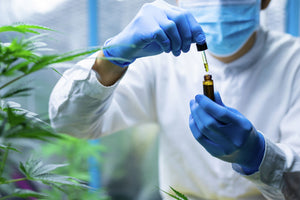Free D8 Sample Gummies
Free 1ml Cart
Free 1g Flower
{"uuid":"e3d01623-dce1-4fb1-9c54-f2d8dd7a0941","config":{"selected_countries_config":[],"show_progress_bar_in":["cart"],"style":{"--reward-font-size":"8px","--message-font-size":"20px","--progress-bar-height":"5px","--progress-bar-radius":"2px","--card-border-width":"1px","--card-border-radius":"9px","--card-background-color":"rgb(27, 27, 27)","--card-border-color":"rgba(0, 0, 0, 1)","--message-text-color":"rgb(223, 180, 48)","--reward-text-color":"rgb(244, 204, 30)","--progress-bar-empty-color":"rgba(228, 228, 228, 1)","--progress-bar-full-color":"rgb(244, 204, 30)","--font-family":"inherit"}},"rewards":[{"goal_amount":20,"discount_amount":1,"discount_type":"fixed_amount","unfulfilled_goal_text":"Add {{amount_left}} to get FREE D8 Sample Gummies! 📢","order":2598,"discount_text":"Free D8 Sample Gummies"},{"goal_amount":40,"discount_amount":1,"discount_type":"fixed_amount","unfulfilled_goal_text":"Add {{amount_left}} to get a Free 1ml Cart! 📢","order":2600,"discount_text":"Free 1ml Cart"},{"goal_amount":60,"discount_amount":1,"discount_type":"fixed_amount","unfulfilled_goal_text":"Add {{amount_left}} to get a Free 1g of Flower!📢","order":2601,"discount_text":"Free 1g Flower"}],"shop":{"currency":"USD","money_format":"${{amount}}","development_store":false,"subscription_active":false},"excluded_variant_ids":[],"selected_countries":[],"goal_type":"cart_amount","fulfilled_goal_text":"Unlocked Free Ground Shipping \u0026 A Free 1g of Flower!📢"}
key: config_1533
value: {"uuid"=>"e3d01623-dce1-4fb1-9c54-f2d8dd7a0941", "config"=>{"selected_countries_config"=>[], "show_progress_bar_in"=>["cart"], "style"=>{"--reward-font-size"=>"8px", "--message-font-size"=>"20px", "--progress-bar-height"=>"5px", "--progress-bar-radius"=>"2px", "--card-border-width"=>"1px", "--card-border-radius"=>"9px", "--card-background-color"=>"rgb(27, 27, 27)", "--card-border-color"=>"rgba(0, 0, 0, 1)", "--message-text-color"=>"rgb(223, 180, 48)", "--reward-text-color"=>"rgb(244, 204, 30)", "--progress-bar-empty-color"=>"rgba(228, 228, 228, 1)", "--progress-bar-full-color"=>"rgb(244, 204, 30)", "--font-family"=>"inherit"}}, "rewards"=>[{"goal_amount"=>20, "discount_amount"=>1, "discount_type"=>"fixed_amount", "unfulfilled_goal_text"=>"Add {{amount_left}} to get FREE D8 Sample Gummies! 📢", "order"=>2598, "discount_text"=>"Free D8 Sample Gummies"}, {"goal_amount"=>40, "discount_amount"=>1, "discount_type"=>"fixed_amount", "unfulfilled_goal_text"=>"Add {{amount_left}} to get a Free 1ml Cart! 📢", "order"=>2600, "discount_text"=>"Free 1ml Cart"}, {"goal_amount"=>60, "discount_amount"=>1, "discount_type"=>"fixed_amount", "unfulfilled_goal_text"=>"Add {{amount_left}} to get a Free 1g of Flower!📢", "order"=>2601, "discount_text"=>"Free 1g Flower"}], "shop"=>{"currency"=>"USD", "money_format"=>"${{amount}}", "development_store"=>false, "subscription_active"=>false}, "excluded_variant_ids"=>[], "selected_countries"=>[], "goal_type"=>"cart_amount", "fulfilled_goal_text"=>"Unlocked Free Ground Shipping & A Free 1g of Flower!📢"}
modal














